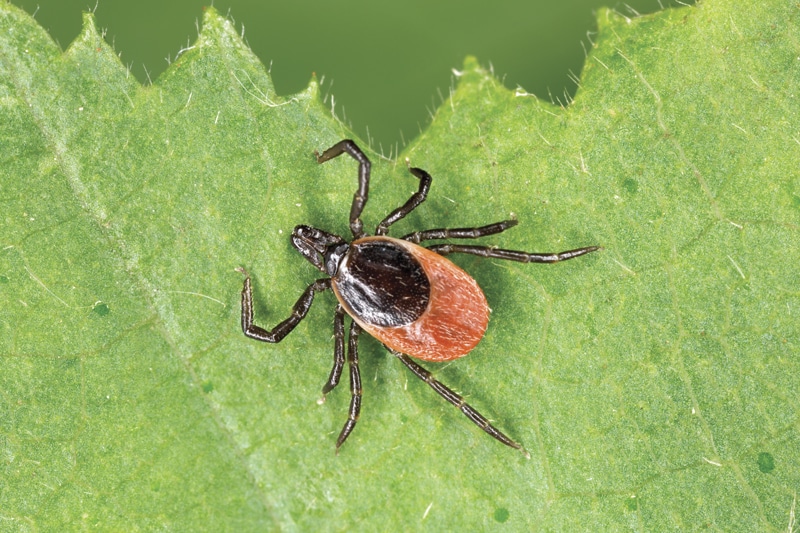Summer encourages time spent outdoors where we soak up the sun for a picnic, camping with family or exploring the trails on a hike. However, since ticks are present, vigilance is required to avoid catching Lyme disease.
Each year, around 100 citizens in the Montérégie region contract the disease. Transmitted to humans by a tick infected with the bacteria Borrelia burgdorfer, Lyme disease can cause redness on the skin, headache, fever, fatigue, and muscle and joint pain. It can have serious consequences such as arthritis or nervous system damage if not treated in time.
The disease was first identified in 1977, following an outbreak of arthritis in children living in the town of Lyme, Connecticut, United States.
In Quebec, more than ten species of ticks are present. The only species that can transmit Lyme disease in Quebec and the northeastern part of North America is the Ixodes scapularis tick, also known as the “deer tick” or “black-legged tick”.
Luckily, a few simple precautions can prevent this disease:
When doing outdoor activities, you must:
- stay on maintained trails to avoid contact with ticks, which usually hang out in tall grass and shrubs;
- apply a mosquito repellent to your skin (containing DEET or picaridin) according to the manufacturer’s recommendations or wear clothing that covers the skin when the temperature allows it;
- examine your body, the bodies of your children and pets upon return home to locate and remove ticks that may have attached to the skin. The risk of contracting the disease increases when the tick remains attached to the skin for more than 24 hours.
Note that Lyme disease is treated with a common antibiotic. The treatment is very effective if it is administered quickly.
Ticks in Montérégie
The Montérégie is one of the regions of Quebec most affected by Lyme disease. In recent years, community pharmacists have been able to administer preventive antibiotic treatment in certain specific cases. To receive this antibiotic, the person must have been bitten by a tick in an area where they are frequently infected. The tick must have remained attached to the skin for more than 24 hours.
Symptoms
Symptoms of Lyme disease can vary from person to person. In most cases, symptoms appear between 3 and 30 days after a bite from a tick carrying the bacteria.
The most common symptom is redness on the skin that causes little or no pain or itching. It appears at the site of the bite, most commonly in the thighs, groin, armpits or torso. It is sometimes in places that are difficult to see, such as the back of the knees, the lower buttocks or back, the scalp, the back of the ears, the eyebrows, the belly button or between the toes. Redness is present in 60 to 80% of cases of infection, but it is not always noticed. It is present for at least 48 hours and quickly spreads to reach over 2 inches. The redness can be in the shape of a ring or a target. It is sometimes very pale and it can have poorly defined contours.
Many people also have fatigue, fever and body aches.
If the disease is not detected and treated quickly, the bacteria can disperse into the blood and cause other symptoms, which occur in the weeks and months after the bite. These symptoms can, for example, be the following:
- Appearance of several rashes that spread over the skin, with little or no pain or itching;
- Paralysis of the face, numbness of a limb, pain in the neck, severe headaches;
- Slightly painful swelling in one or more joints (for example, knee);
- Chest pain, palpitations or dizziness.
Sources: Government of Quebec
CISSS de la Montérégie-Centre







